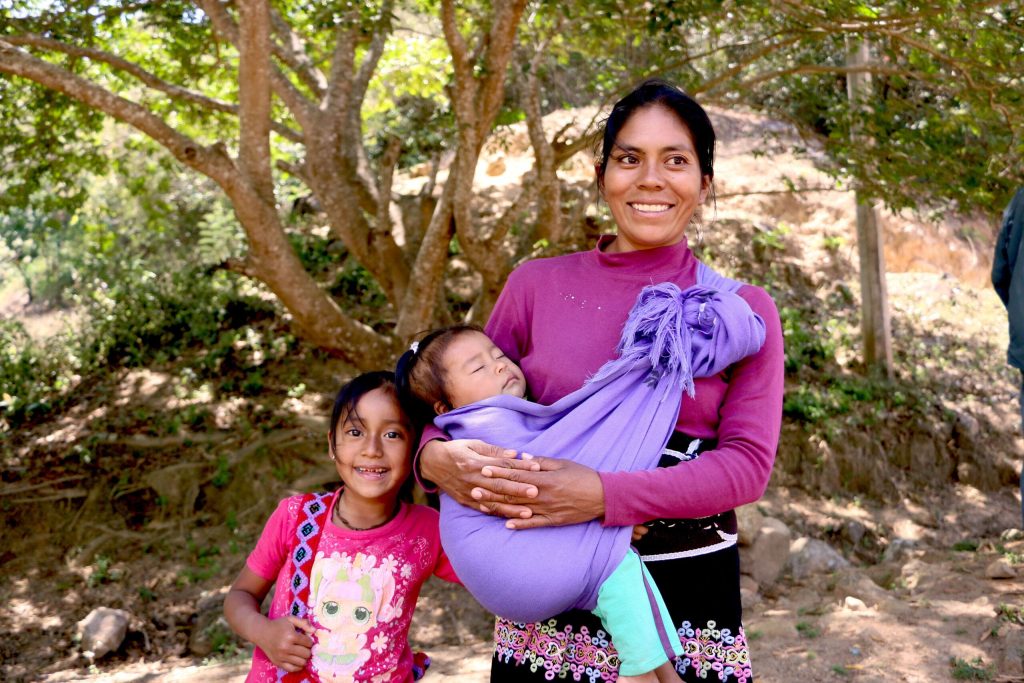An Indigenous Community Finds a New Home—and Restores a Landscape
4 min read
“When we first got here, there was only one tree. It was all the shade we had between all of us—and it was hot,” Fernando Santiz Pérez, president of La Ramona, an ejido in Chiapas, Mexico, recalled. “And all that—” he said, motioning toward the emerald hills, “—was pasture.”
Seeing this vibrant village now, with about 30 homes flanked by lush gardens, not to mention a covered basketball court, two chapels, and two one-room schoolhouses, it is hard to believe that just 18 years ago this land was severely degraded—and virtually uninhabitable. But when 20 Indigenous Tzotzil families arrived here in 2005, they were glad to have any patch of earth to call their own. Driven out of their ancestral lands 140 miles away in the 1990s, they had wandered from place to place, until finally, they settled these 100 hectares and formed an ejido (communally owned land). The community got to work, clearing a road through the rugged hills, building homes, planting shade trees, and cultivating coffee.
Despite its Herculean efforts, the community of La Ramona continued for some years to struggle with poor coffee plants, degraded soil, and climate challenges. Then, in 2018, the Rainforest Alliance teamed up with Olam Food Ingredients (ofi) as part of a five-year USAID initiative called Alliance for Sustainable Landscapes and Markets. The overall goal of this work was to allow La Ramona, along with seven other nearby communities, to farm in ways that let them thrive economically while working to restore the land to its original richness.
Since the initiative started, La Ramona has transformed the landscape from a near-desert into a healthy, productive ecosystem. La Ramona has planted 30,000 trees and 65,000 coffee plants, boosting its production to an average of 18 quintals of coffee parchment per hectare (compared to 5 to 8 quintals that nearby communities produce). “It’s cooler now, too,” Santiz said.
Rainforest Alliance agronomy expert Daniel Domínguez Monzón, who worked closely with La Ramona, said that the conservation and production achievements are impressive, but the “human side—education, governance, nutrition, and self-determination—is just as important if the community is to sustain itself over the long term.”
“It was leave or be killed.”
Self-determination and a sense of security are, not surprisingly, paramount to the community of La Ramona. In the aftermath of the 1994 Zapatista uprising—a fight for Indigenous rights in Chiapas that garnered international attention—long-brewing religious conflicts in the region reached a boiling point. While most agree that ultimately the conflicts had more to do with politics and economics than belief systems, the outcome for La Ramona’s founding families was the same: They had to flee for their lives, losing everything in the process.
“It was leave or be killed,” Santiz said. After their homes and land were seized, the families first fled to a community called Nuevo Mitontic. But when government funds for resettlement arrived, the families could not come to terms with the existing community as to how to divvy up resources. They moved again, this time to the town of Villa Corzo, where they set to working on an agreement with the government to purchase their own land. When at last these 100 hectares became theirs in March 2005, the families named their ejido La Ramona, in honor of the revered Zapatista commander and most famous woman leader in the Indigenous struggle.
Within the year, the families were cultivating coffee with plants gifted—or so they thought—by a local exporter. Because La Ramona’s founders spoke mainly Tzotzil, they did not understand that they would be expected to pay the exporter back for the plants after three years. And given that the plants were of poor quality and produced scanty harvests, repayment was difficult.
“We suffered a lot back then,” Santiz said. “But thankfully, we’re recovering.”
Partnering for a thriving landscape
Under the USAID initiative, ofi hired several technicians, whom the Rainforest Alliance’s Domínguez trained on regenerative coffee farming with a focus on climate resilience and restoration. Then, together, the Rainforest Alliance and ofi held trainings for community members.
Science shows that what Indigenous people did 100 years ago is the best way to farm.
Daniel Domínguez Monzón, Rainforest Alliance
In a sad irony, much of what was shared in trainings are Indigenous practices that had been lost over the years. In the modern era, Domínguez said, “traditional ways came to be devalued in favor of conventional agriculture methods, like excessive agrochemical use, which we now know cause problems.” He added, “But science shows that what Indigenous people did 100 years ago is the best way to farm.”
Now these traditional, regenerative practices have been restored to the community of La Ramona—and shared with ofi’s technicians, as well. Armed with this wealth of knowledge, the technicians can support coffee growers that they work with throughout the region. “The impact of this work goes far beyond what was achieved under the initiative, because ofi can now replicate the work throughout Chiapas and beyond,” Domínguez said.
Looking ahead
La Ramona continues to flourish. With its increased income, the community—which has expanded from 20 to 35 families—has purchased fifty more hectares. It is also currently building a Catholic church and expanding a Seventh Day Adventist chapel. Though it was religious conflicts that led to the community’s violent expulsion nearly 20 years ago, Santiz insisted that no such divisions exist today in La Ramona. “There’s no discrimination here. After what our families went through, how could we do that?”
“Anyway,” he said, smiling, “all that is in the past now.”





